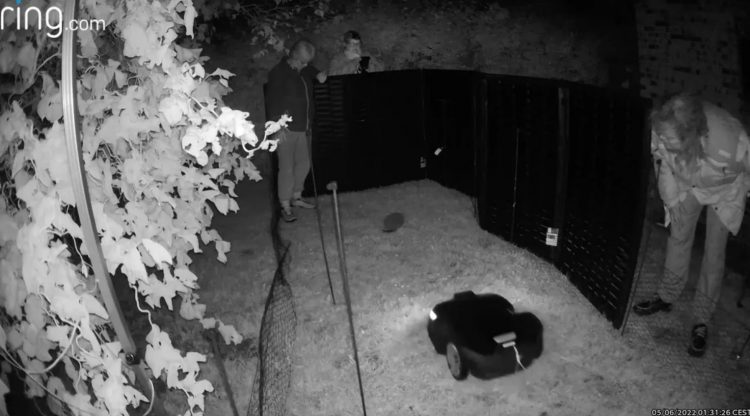Although European hedgehogs are often seen in gardens, their presence beside people may sometimes expose them to risks, including those posed by advanced technology used to maintain our lawns. Recent research has shown the potential for some robotic lawnmowers to pose a threat to hedgehogs. However, fortunately, the study has also proposed an innovative safety testing method.
The answer was presented in the shape of a hedgehog used as a “crash test dummy”. Dr. Sophie Lund Rasmussen from the University of Oxford led a team that created a dummy using a soft rubbery plastic material. The dummy is specifically intended to imitate the soft and squishy body of a genuine hedgehog, including its distinctive spines.
Prior to developing a safety test with this mannequin, it was crucial to ascertain the response of hedgehogs when confronted with a robotic lawnmower. The study team conducted an experiment in a controlled setting, where they observed the reactions of hedgehogs that had been rescued and were now prepared for release. The hedgehogs were exposed to a bladeless robotic lawnmower positioned at a distance of 50 centimeters (20 inches) from them.

The experimental configuration included conducting encounter tests between live hedgehogs and a deactivated robotic lawnmower that was halted before to reaching the hedgehogs.
They discovered that the critters exhibited one of three behaviors: fleeing, positioning themselves in front of the lawnmower with a little curve, or investigating it by smelling. Using this information, the researchers were able to determine the optimal placements for the hedgehog crash test dummy in order to conduct safety tests on a robotic mower. The test results would then indicate if the device could successfully avoid a hedgehog, and if not, the extent of harm it would inflict on the animal.
It is anticipated that the implementation of the new safety test will result in the creation of further robotic lawnmowers that are compatible with hedgehogs. Dr. Rasmussen has informed IFLScience that such development is currently underway.
Our investigation has shown that some kinds of robotic lawn mowers pose a possible danger to hedgehogs, while others do not. “Consequently, we have established partnerships with industry counterparts to address this challenge by developing hedgehog-friendly autonomous lawn mowers, leveraging the insights acquired from our research,” added the researcher.
The two articles detailing the discoveries have been published in the journal Animals, available here and here.
 Tech Gadget Central Latest Tech News and Reviews
Tech Gadget Central Latest Tech News and Reviews




